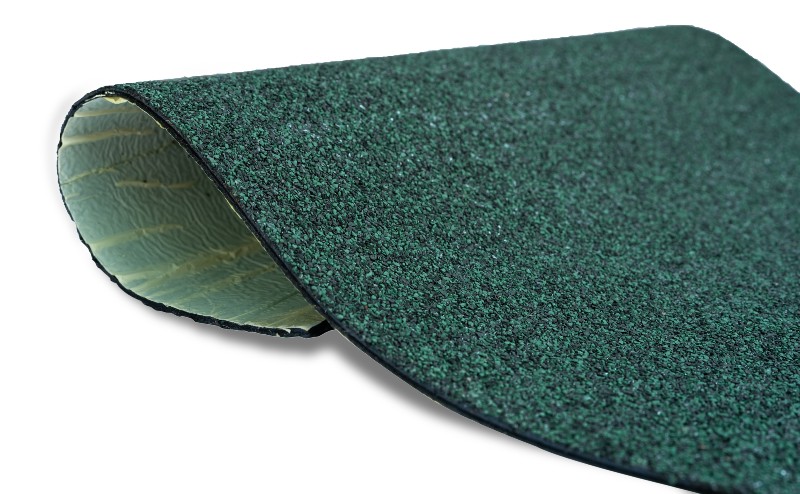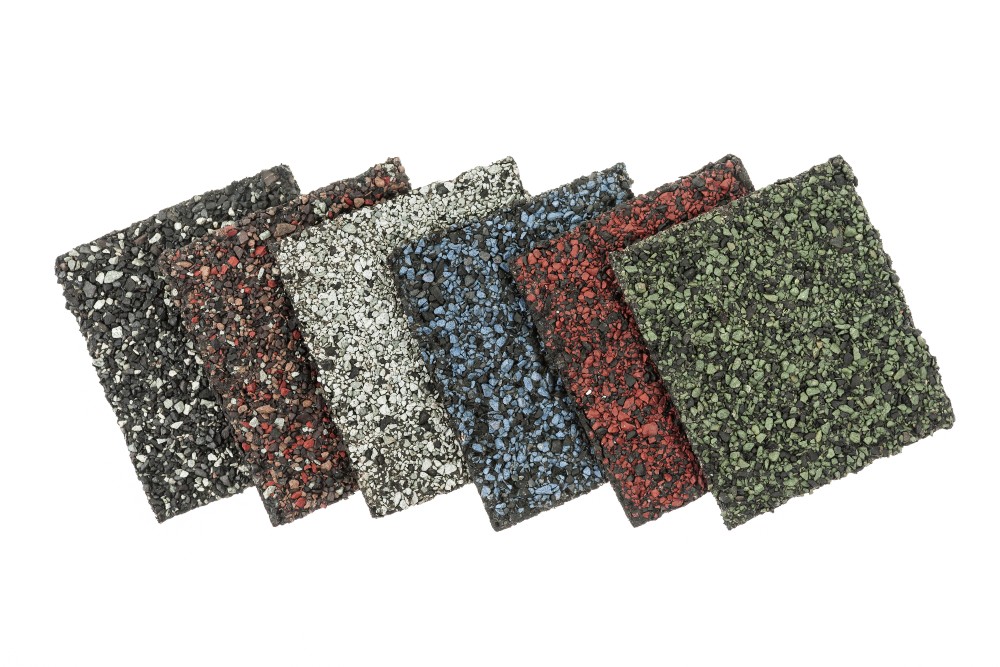Modern roofing shingles come in a variety of styles and materials, including slate, wood shakes, metal and composites. Most often, however, the roofing shingles you see atop houses are predominantly made of asphalt. But there’s more to the story than just that. Read on to learn how manufacturers turn asphalt into a light but durable roofing material.
How They’re Made
The dominant roofing product in the United States, asphalt shingles are found on scores of homes from coast to coast. Regardless of style or color, they are all essentially made in the same way using a relatively brief list of specific materials, based on a continuous web process. But what are these fundamental materials?
Fiberglass
Asphalt shingles are manufactured using a continuous sheet or web which creates a foundation for the asphalt and other materials. Asphalt shingles are almost always reinforced with a thin but sturdy fiberglass mat, made from tiny fibers of glass stuck together using various binders and resins. The fiberglass is then wound into big rolls at a mill and later unwound at the beginning of the shingle manufacturing process.
Asphalt
Water-resistant asphalt is the primary ingredient in roofing shingles. An end-product of oil refining, the material is somewhat similar in origin to the asphalt you drive on. That said, it is processed to a greater degree of toughness required for roofing shingles.
Manufacturers increase the hot asphalt’s viscosity by blowing air through it. This process must be precise since too little can cause the shingles to be soft and too much can cause them to be too brittle. A mineral powder is added to the asphalt to enhance weather resistance and make the material even more fire-resistant. Once it’s ready, the mineral-fortified coating of asphalt is then applied to the mat of fiberglass on the bottom and top.
Granules
The stone granule surfacing is the most obvious characteristic of asphalt roofing shingles. It is made by crushing hard rock into tiny granular fragments of specific size specifications. The granules are made in an array of colors using a technique called ceramic firing to give them a pleasing and lasting aesthetic on the exposed part of the roofing shingle.
Some asphalt shingles have algae-resistant granules that inhibit the growth of blue-green algae which can cause discoloration. Reflective granules are also sometimes used to make shingles that reflect more of the sun’s light and heat energy. These shingles are often required by building codes in certain regions.

Sealant
A thermally activated type of asphalt sealant is used to bond the shingles to one another atop the roof. For multi-layer laminated shingles (most modern shingles used today), a similar material known as laminate is used to stick the shingle layers together during the manufacturing process.
Because a roofing shingle’s asphalt coating is also a sticky material, the bottom side must be covered with a material known as “back-surfacing” to keep the roofing shingles from sticking together in the packaging and adhering to the process rolls during manufacturing. Often sourced from fine sand or limestone-type rock, this fine mineral powder is visible on the back of asphalt roofing shingles.
Release Film
When bundles of shingles are stored in a hot warehouse or outside in summer weather, sealant could activate prematurely, causing the shingles to stick together right in the package. Release film is added to prevent this. It resembles a sort of plastic tape and is usually located on the backside of the shingles. The film does its job while the roofing shingles are in the package. After they are installed, the release film serves no purpose and simply remains on the backside of the shingle.
Although there aren’t a lot of raw materials used to make asphalt roofing shingles, every one of them serves a critical purpose. They are sourced, processed, perfected and designed to work in concert to make a roofing product that is durable, water- and fire-resistant, lightweight and among the best value options available for today’s homeowner.
Need a new roof or help repairing weather-related damage? A to Z is ready to help. We’ve developed a widespread reputation as one of Colorado’s premier roofing contractors by providing reliable workmanship and attentive, honest customer service. Contact our attentive team to learn more.
For more on asphalt shingles, be sure to read our blog: How Long Do Asphalt Shingles Last?

